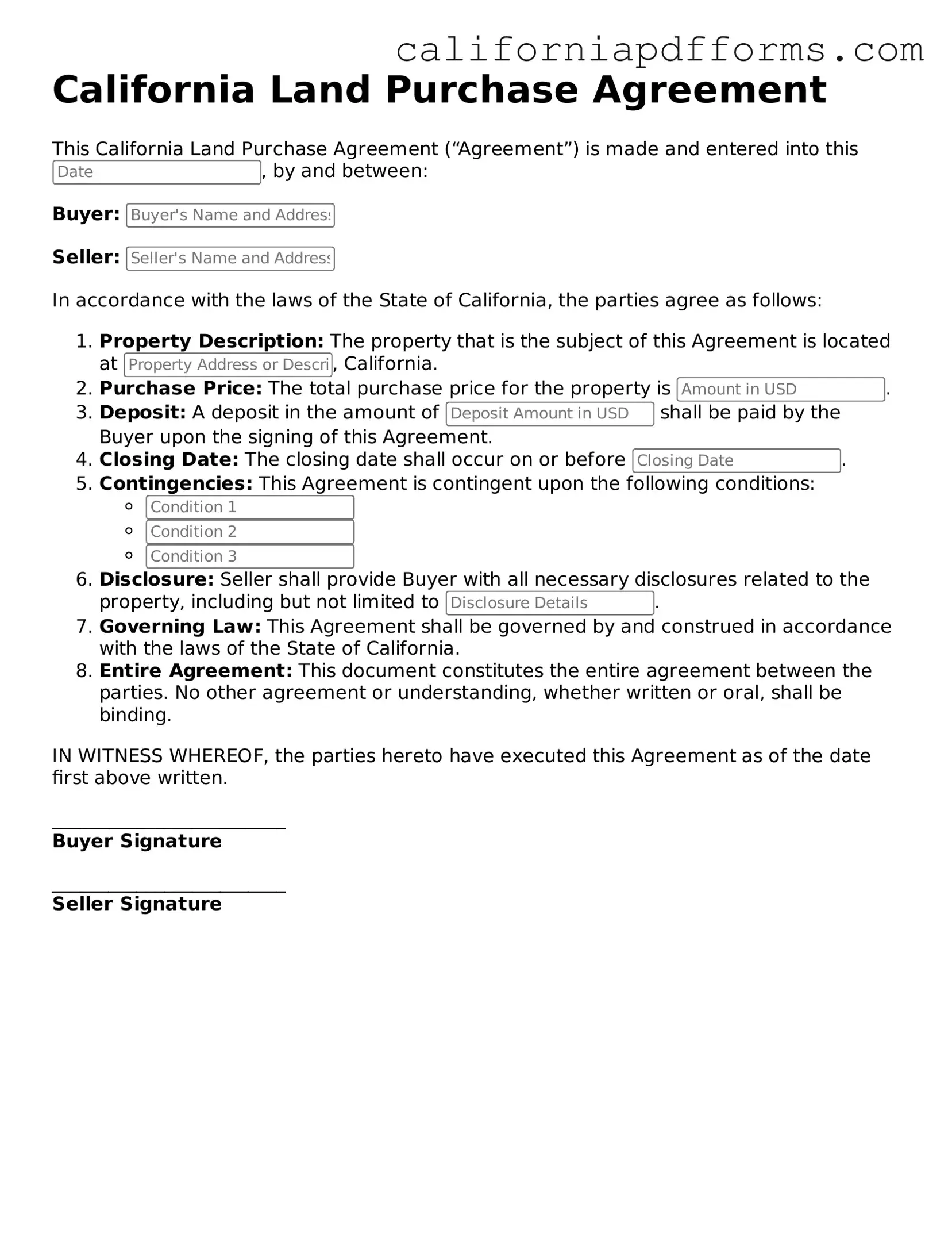What is a California Land Purchase Agreement?
A California Land Purchase Agreement is a legal document that outlines the terms and conditions under which a buyer agrees to purchase land from a seller. This agreement includes essential details such as the purchase price, property description, and timelines for closing the sale. It serves as a binding contract that protects both parties' interests during the transaction.
What should be included in a Land Purchase Agreement?
Key elements of a Land Purchase Agreement typically include:
-
Property Description:
A clear and detailed description of the land being sold.
-
Purchase Price:
The total amount the buyer agrees to pay for the property.
-
Payment Terms:
Information on how and when the payment will be made.
-
Contingencies:
Any conditions that must be met for the sale to proceed, such as inspections or financing.
-
Closing Date:
The date when the sale will be finalized and ownership transferred.
-
Signatures:
Signatures of both the buyer and seller, indicating their agreement to the terms.
Is a Land Purchase Agreement legally binding?
Yes, a Land Purchase Agreement is legally binding once both parties have signed it. This means that both the buyer and seller are obligated to adhere to the terms outlined in the agreement. If either party fails to fulfill their obligations, the other party may have legal recourse to enforce the agreement or seek damages.
Can I modify a Land Purchase Agreement after it has been signed?
Modifications to a Land Purchase Agreement can be made after it has been signed, but both parties must agree to the changes. It's essential to document any amendments in writing and have both parties sign the revised agreement. This ensures clarity and helps prevent misunderstandings later on.
What happens if the buyer backs out of the agreement?
If a buyer decides to back out of the Land Purchase Agreement without a valid reason (such as unmet contingencies), the seller may have the right to retain the buyer's earnest money deposit as compensation for the breach. In some cases, the seller may also pursue legal action to enforce the agreement or seek damages.
Do I need a lawyer to draft a Land Purchase Agreement?
While it's not legally required to have a lawyer draft a Land Purchase Agreement, it is highly advisable. A legal professional can ensure that the agreement complies with California laws and adequately protects your interests. They can also help you understand the implications of the terms and conditions included in the document.
